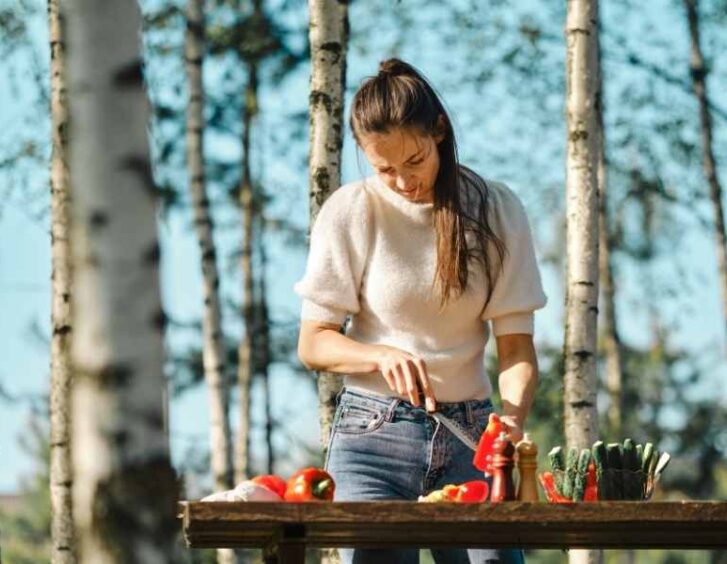Gardening isn't just about planting seeds and watching them grow; it's about cultivating a world where nature's beauty intertwines with our emotions. As a gardener, you know that the act of tending to your plants is more than just a hobby—it's a journey of nurturing, growth, and connection. In this article, we embark on a unique journey that goes beyond the blooms and leaves. We'll delve into the rich tapestry of different human emotions, uncovering the triggers that ignite them, the coping strategies that help us navigate them, and the surprising ways that gardening can cultivate emotional well-being.
The Garden Within: Emotions as Flowers
Just as your garden is an expression of your care and attention, your emotions are the flowers that color your inner landscape. Each emotion is a unique bloom, representing a moment in time and a facet of your experience. From the vibrant petals of joy to the tender buds of curiosity, your emotional garden is as diverse and intricate as the plants you nurture.
Triggers: What Sets Your Emotions in Motion?
Just like different plants thrive under specific conditions, your emotions are triggered by various stimuli. Triggers can be as varied as a melody that sparks nostalgia, a compliment that uplifts your spirit, or a memory that brings tears to your eyes. Understanding these triggers is like knowing the perfect amount of sunlight your plants need to flourish.
Coping Strategies: Nurturing Your Emotional Landscape
When the storm clouds of emotions gather, coping strategies are your umbrella. They offer shelter and guidance as you navigate through the raindrops of feelings. Just as you prune and shape your plants for optimal growth, coping strategies help you shape your emotional responses to the challenges life presents.
The Healing Power of Gardening: A Metaphor for Emotional Well-being
As a gardener, you've felt the therapeutic power of gardening firsthand. The act of planting, nurturing, and watching your garden thrive is a parallel to tending to your emotions. Just as you provide water, sunlight, and care to your plants, you can also cultivate emotional well-being through self-care and understanding.
The Blooms of Happiness and the Shadows of Sadness
Happiness, like the radiant flowers in your garden, is a symbol of life's beauty. It emerges from accomplishments, shared moments, and the simple joys of life. On the other hand, sadness casts shadows like a passing cloud, stemming from loss, disappointment, and heartache. Both emotions are threads that weave the fabric of your experience.
Planting Seeds of Courage in the Soil of Fear
Fear is the weed that can threaten to choke your emotional garden. It can prevent you from taking risks and exploring new horizons. Just as you cultivate courage to confront gardening challenges, you can nurture courage within yourself to face your fears and allow personal growth to flourish.
Resilience, the evergreen shrub of emotions, offers stability during the changing seasons of life. Just as your plants bend with the wind and bounce back after a storm, resilience empowers you to adapt, learn, and thrive in the face of adversity.
Cultivating a Garden of Connection: Love and Beyond
Love, the vibrant rose in your emotional garden, takes various forms, from romantic to familial. Just as you foster connections with your plants, love requires attention and care to bloom and flourish. Love and connection are intertwined, much like the roots of your plants.
Embracing Surprises in Your Emotional Garden
Surprises, like unexpected blossoms, add excitement and spontaneity to your emotional landscape. They can be delightful or challenging, inviting you to embrace the unknown just as you would welcome a new plant sprouting in your garden.
Conclusion: Nurturing Your Emotional Garden
As a gardener, you understand that the more you invest in your garden, the more it thrives. Similarly, nurturing your emotional garden requires time, patience, and understanding. By recognizing triggers, implementing coping strategies, and exploring the soothing benefits of gardening, you cultivate an emotional landscape that flourishes with vibrancy and well-being.
How Does Gardening Impact Human Emotions and Triggers?
Gardening has a profound impact on human character traits and gardening enthusiasts. It has been shown to improve mood, reduce stress, and increase a sense of well-being. Connecting with nature and experiencing the satisfaction of nurturing plants can trigger feelings of calmness, joy, and fulfillment.
FAQs
- Can gardening really impact emotional well-being?
Absolutely. Gardening provides a space for self-care, mindfulness, and connection with nature, all of which contribute to improved emotional well-being. - How can I incorporate gardening into my daily routine?
Start small. Even a few minutes of tending to your plants each day can have a positive impact on your mood and overall emotional health. - What role do mindfulness and presence play in gardening?
Gardening encourages you to be present in the moment, focusing on the task at hand and allowing worries to fade away—a practice that mirrors mindfulness techniques. - How can gardening help me manage stress and anxiety?
Engaging in gardening activities can reduce stress hormones, promote relaxation, and provide a healthy outlet for pent-up emotions. - Can you draw a parallel between pruning plants and letting go of negative emotions?
Absolutely. Just as you prune dead leaves to encourage growth, you can let go of negative emotions to make space for positivity and personal development.
In the garden of human emotions, every bloom tells a story. Each petal represents a moment, a memory, a connection. By understanding the triggers that awaken these blooms, practicing effective coping strategies, and embracing the nurturing qualities of gardening, you nurture not only your plants but also your emotional well-being. So, as you tend to your garden, remember that you're also cultivating a vibrant landscape of emotions that are as unique and precious as the plants you cherish.
















